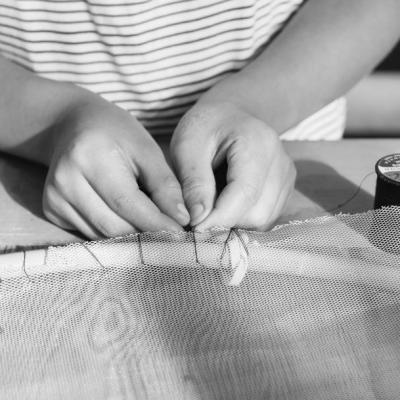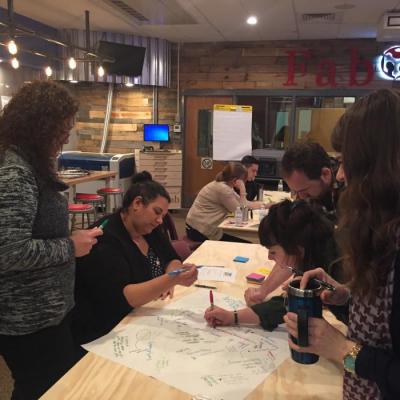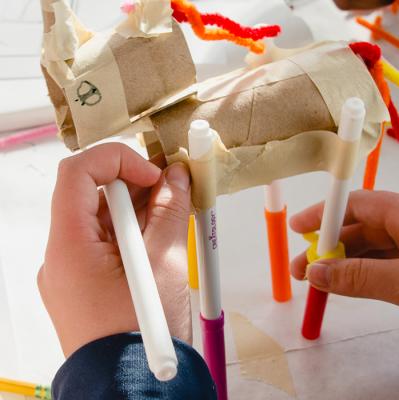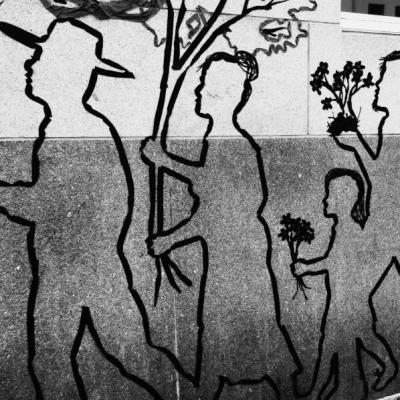這個思考模式通過幫助學生近距離觀察某個物品/系統的細節,考慮不同的使用者和利益相關者不同的觀點角度,以反思自己和這個物品/系統的關係來探究其中的關聯性。

Making Moves: One Page Guide
The AbD Making Moves are a set of observable or actionable “moves” that learners and educators can use to help design maker-centered learning experiences, and to support, observe, document, and assess maker-centered learning.

JusticexDesign: Developing a Sensitivity to Designed Injustices
Banner image courtesy of Agnes Gómez and her 5th grade students at Sacred Heart School (School year: 2019-2020).
Agency by Design and JusticexDesign (JxD) extend great appreciation to Jaime Chao Mignano for being a thought partner in conceiving of the JxD project as well as to JxD Origin Educators for their invaluable contributions to this work: Agnes Gómez, Angélica Guerrera, Anne Leflot, Ashley Beck, Gerald D. Smith Jr., Maria Fernanda García, Mark Perkins, Nick Loewen, and Sonia Chintha. Thanks also to educators Julie Rains and Lisa Yokana, who participated remotely in trying out some JxD tools during its pilot year. Sincerest appreciation to Edward P. Clapp and Jim Reese, as well as the Washington International School, for their generous and ongoing support in making JxD possible.

Building a Maker Educator Learning Community in Pittsburgh
Guest Author Jeff Evancho, the Project Zero Programming Specialist at the Quaker Valley School District, describes the process of establishing the Pittsburgh Maker Educator Learning Community, including the community’s interest in developing documentation and assessment strategies for the maker-centered classroom.
Parts, Purposes, Complexities - Adapted for Early Childhood Education
This routine encourages learners to slow down and make careful, detailed observations as they look beyond the obvious features of an object or system and think about how it works. This thinking routine can help foster curiosity as children notice details, ask questions, make connections, and identify topics for future inquiry.

Tinkering Towards a Definition of Tinkering
How do you define tinkering? In this post, Agency by Design principal investigator Shari Tishman tinkers towards a definition of tinkering that considers standard text book definitions, examples from real life tinkerers, and a consideration of the “symptoms” of tinkering.
Think, Feel, Care - Adapted for Early Childhood Education
This routine encourages students to consider the diverse perspectives that different people within a particular system may have based on their role in the system. This routine fosters perspective taking and can help children generate new questions and/or ideas about the system, how it works, and how it might be improved.

Partes, Propósitos, Complejidades
Esta rutina de pensamiento ayuda a los estudiantes a ir lentamente y observar detallada y cuidadosamente, al animarlos a mirar más allá de las características obvias de un objeto o sistema. Esta rutina de pensamiento estimula la curiosidad, plantea preguntas y hace evidente otras áreas para continuar la investigación.

Materials Exploration
This practice promotes noticing, play, and exploration. When learners have time to tinker with materials they can gain an understanding of the affordances, possibilities, and constraints inherent in a variety of making materials.